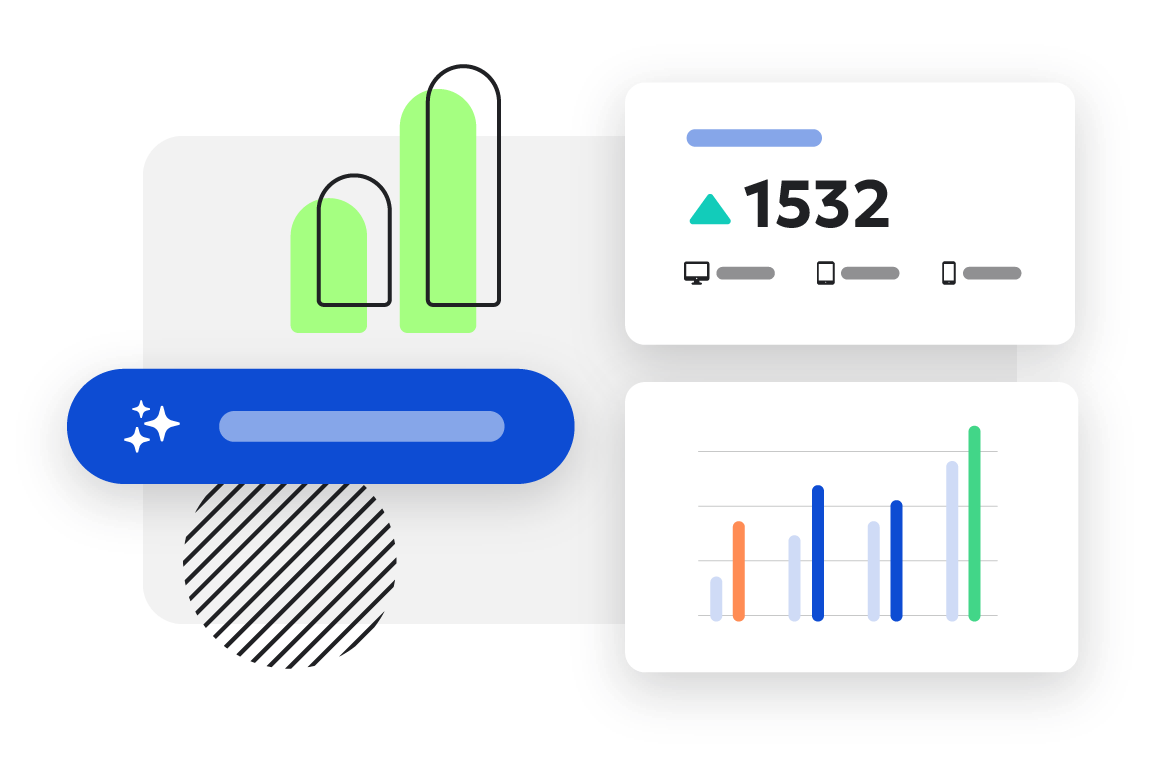How to measure digital student engagement
- By Kyra Kuik - Mar 09, 2020 Web Governance Web Analytics
In an increasingly competitive higher education environment, many universities are prioritizing digital student engagement to increase application numbers and boost overall student satisfaction. But, with the expansive range of student engagement platforms available, it can be difficult to assess if engagement efforts are actually making a difference. And even if student engagement increases, how much does that engagement move your organization towards its goals?
Making sense of the digital student engagement landscape requires thoughtfulness, strategy, planning, and agility – and being clear about what constitutes student engagement (and reliably measuring it) is a good place to start.
Higher education’s digital transformation
This generation of digitally savvy students expects a sophisticated user experience in all their online interactions – and a school’s website is no exception. To meet these expectations, universities across the globe are in the midst of a digital transformation. This transformation can be broken down into two components:
- A rich student database. Student data is collected from digital interactions, such as website clicks and visits, and then used to determine how and when communication should be delivered to enhance the student’s digital experience.
- Student engagement. The data in your student database enables relevant communications at the right time and place (and on the right platform).
What is digital student engagement?
Digital student engagement takes many forms. It encompasses all the touchpoints you have with your students on a digital platform. Essentially, it can be anything and everything that involves an online interaction, ranging from opening and clicking links in emails to applying for a program. It can include customer service efforts—like answering questions—or even maintaining perceptions of your university’s brand and legacy.
Because digital student engagement covers so much ground, it can be overwhelming to start analyzing and tracking your work. How do you know which efforts are meaningful? And how do you even measure it?
Six steps to measure student engagement
Measurement is vital to understanding how your institution stacks up when it comes to digital student engagement. Without it, you have no way of knowing what works and what doesn’t. To make sure your measurement gives you the insights you’re after, here are six crucial steps for increasing student engagement online.
Step 1. Start with a student journey map and create content

Start your university’s engagement efforts by taking a closer look at your extended student journey, from application to graduation. To do that, work with students, alumni, and faculty members to create an authentic student journey map. Include at least the four major stages of the student journey: (1) awareness, (2) evaluation, (3) application, and (4) post-acceptance and attending student.
Mapping out current and prospective students’ digital journeys shows the various paths they can take when exploring your institution’s digital environments. It also identifies the diverse student lifecycle phases and how students interact with your university during each one.
After identifying each phase, create relevant content for each stage to target crucial moments when students need support. That way, your university can address student pain points and deepen engagement. Now, you’re ready to move to the next step.
Step 2. Create a measurement plan

The types of digital engagement you track depend both on your institution’s goals and where the student is in the journey. Regardless of the metrics you track, to see if your efforts are paying off, you must create a measurement plan.
A measurement plan categorizes the metrics you want to track, which platforms are used when, and what success will look like for each metric. It’s important to set benchmarks along the way, so you can continuously improve engagement opportunities. As an extra benefit, your measurement plan can align your team on what success looks like, which means you’ll be working towards the same goals and standards.
Step 3. Consider performance on the most crucial platforms

Universities can engage students across a number of channels, including emails, chatbots, text messages, and mobile apps. Initially, focus your efforts on two key channels: your website and social media platforms.
- Website—Your website’s design and interface are crucial to how your university is perceived by students. In fact, according to one study, a university’s website is “the ultimate brand statement,” a major component of the student experience, and can greatly influence a student’s decision to apply.
So, approach your website from a student’s perspective to see how they may feel using that platform as an engagement tool. Ask yourself, is this site informative, attractive, and easy to navigate?
- Social media—This plays a huge role in students’ perception of universities. Institutions now make greater use of social media platforms like Facebook, Twitter, YouTube, and Instagram to market their programs and engage with students. To a prospective student, how your university responds to their questions or comments makes all the difference. So, make it count!
Step 4. Data is your friend

The data generated by your digital platforms holds insights into what’s working, what’s not working, and which areas need optimizing. Access to student engagement data can help you communicate with students by triggering an automated chatbot response that delivers meaningful information (such as a link to a specific degree program) when the student needs it. And, when working in such a complex data environment, you can create student personas to help design engagement strategies.
Let’s say your university wants to reduce dropouts during the first year. Gather student data, such as grades and attendance records, from your learning management system. Then, pair that data with student demographic data to construct a student dropout profile and determine the stages in their student journey in which they typically drop out.
Now you can target communications efforts toward students that fit that profile at the riskiest stages in their student journey. To help keep them on track for graduation, for instance, you could send information about additional tutoring resources, financial aid, or peer support.
Keep in mind, data is only useful if it is accurate. So, be sure to use only clean data that has been validated. Now, you can start accurately measuring your efforts to increase engagement.
Step 5. Measure everything and look for patterns

Many universities tend to focus on the big “submit an application” engagement. Yet, there are other engagement touchpoints that are important to your university, like:
- Retention and graduation rates
- Program completion times
- Tracking academic performance
- Registrations for information sessions or campus tours
- Students reaching out to university staff and faculty
- Alumni donations
So, take a deep dive into your digital analytics system to hunt for other student engagement patterns. Can you tell how long it takes students to complete a desired action on their journey? Do certain pages or marketing materials attract and engage students more effectively than others? Are there consistent engagement gaps or barriers? Answering such questions allows you to set new benchmarks and start optimizing.
Step 6. Optimize the digital student experience

Now that you’ve collected, analyzed, and measured your digital student engagement data, use it to optimize your digital presence. This means updating your website content and features to provide targeted, relevant information and resources for your data-backed student needs. Don’t forget to include explicit, blatant calls to actions, like “Apply Now” buttons.
In general, your digital assets should:
- Appeal to a diverse range of visitors
- Be intuitive and uncluttered
- Provide easy architecture and navigability
- Contain relevant content and engagement points
Using a digital analytics tool, you can observe which of your website’s content or functions students are actually looking at, searching for, and using. For instance, you may learn that having a contact button is more effective at getting engagement leads than a list of emails.
The student engagement bottom line
Student engagement strategies are changing. While traditional forms of engagement are still among the most effective and popular strategies for universities, students are increasingly dependent on universities’ digital engagement offerings. And if you’re not measuring engagement efforts, you’re missing out on insights that can help improve your digital student experience, and potentially on opportunities to improve your brand and reputation.
For universities, digital transformation is about leveraging data to gain awareness of the processes students go through and their needs. To ensure long-term improvement regularly measure student engagement data and assess benchmarks with your analytics system. To see how you fare against the competition, compare your data and benchmarks against industry-wide benchmarks.
But for now, these six steps will give you a great start!

Ready to make the most out of your Web Analytics?
Siteimprove Analytics is an all-in-one Web Analytics solution
Schedule a demo